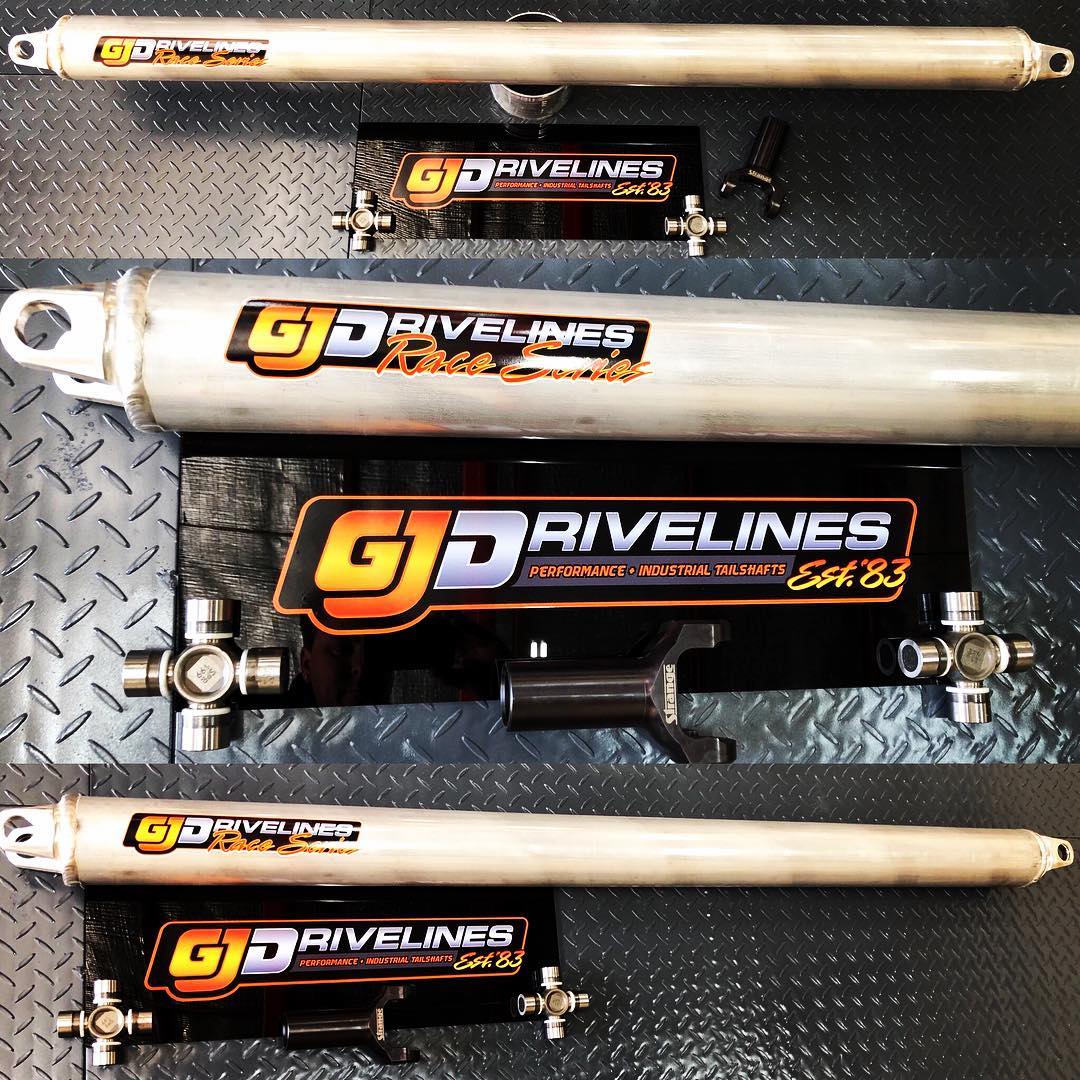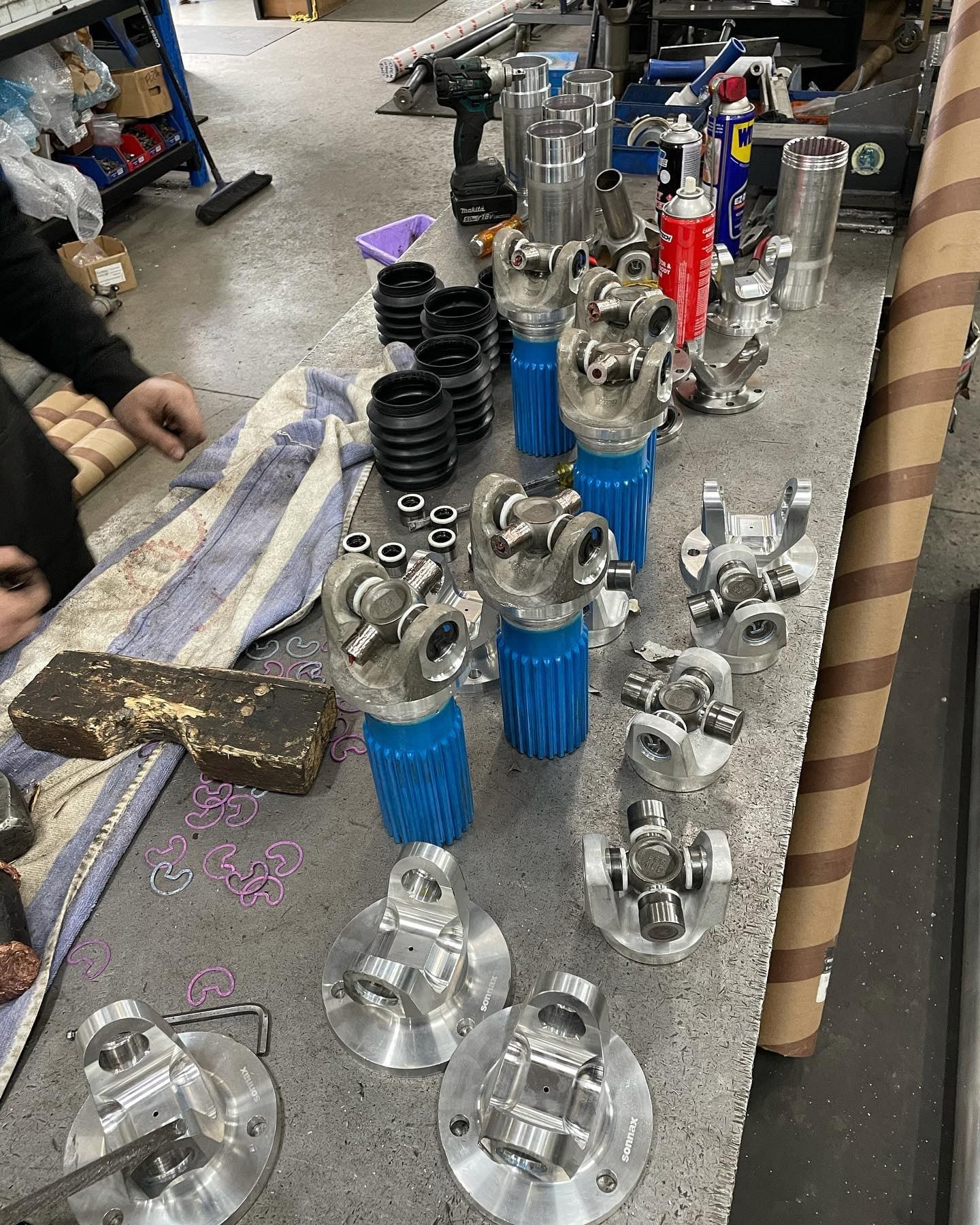No products in the cart.


Two essential, but often overlooked, components are the tailshaft and centre bearing. These hardworking parts keep your drivetrain running efficiently, and with a little care, you can significantly extend their lifespan.
Your tailshaft is responsible for transferring power from the engine to the wheels, while the centre bearing keeps it supported and aligned. Together, they endure immense pressure and constant movement, making them vulnerable to wear and tear over time.
Proper maintenance of these important parts isn’t just about avoiding costly repairs—it’s also about ensuring a smooth and reliable driving experience.
Keeping your tailshaft balanced is crucial for preventing unnecessary strain on the centre bearing and other drivetrain components. Misalignment or imbalance can create vibrations that not only reduce driving comfort but also speed up wear and tear, potentially leading to a more costly repair down the road.
Routine servicing ensures that both parts are in peak condition and working together seamlessly.
Your driving style plays a big role in how long your tailshaft and centre bearing last. Aggressive acceleration, excessive towing, and off-road adventures can put additional strain on these components.
While your vehicle is built to handle a lot, adopting smoother driving habits can reduce stress and extend the life of key parts.
Deciding between balancing and replacement depends on the condition of your tailshaft and the demands of your vehicle.
For minor issues or maintenance, balancing is often sufficient and keeps your car running smoothly. However, if your tailshaft is significantly damaged or outdated, replacement ensures your vehicle remains reliable and safe.
Remember, consulting with an experienced mechanic is always a good option to guide you through these decisions.
Taking care of your tailshaft and centre bearing is an investment in your car’s performance and reliability. Routine inspections, timely balancing, and mindful driving all contribute to prolonging their lifespan and avoiding unexpected breakdowns.
If your vehicle is showing signs of wear or you’re due for an inspection, it’s time to get expert help.
At GJ Drivelines, we are experts at maintaining and repairing tailshafts and centre bearings with unmatched quality.
Contact us today to keep your vehicle running smoothly for the long run!
If you’ve been experiencing vibrations or suspect your tailshaft may need balancing, it’s time to seek expert advice.
At GJ Drivelines, we specialise in keeping your tailshaft in top condition with high-quality services and experienced professionals.
Reach out today to schedule an inspection and keep your vehicle performing its best!
Chrysler – Dodge
727 – 30 Spline 1 11/16″ Seal Diameter
904 – 26 Spline 1 9/16″ Seal Diameter
Ford
C6-T56 – 31 Spline 1 11/16″ Seal Diameter
AOD & C4 & T5 – 28 Spline 1 1/2″ Seal Diameter
4 R 7OW – 28 Spline 1.598″ Seal Diameter
General Motors
T-350 700R4-4LLOE – 27 Spline 1 1/2″ Seal Diameter
T-400-4L80E – 32 Spline 1 7/8″ Seal Diameter
Note: Transmission slip yokes are manufactured with various U-Joint Series. It is important to match Horsepower and Torque requirements to U-Joint Series. For aftermarket transmission applications usually a spline count and seal diameter will identify slip yoke required.

If Pinion Yoke has Placement tabs that retain the U-Joint, measure inside tabs. See Diagram D.

If Pinion Yoke does not have Placement Tabs that retain U-Joint, measure from flat of yoke inside to inside. See Diagram E.

If 4 bolt Flange is used on pinion, measure Pilot Diameter and center to center diagonally bolt hole to bolt hole. See Diagram L.

Universal Joint Size. There are hundreds of U-Joint sizes or “Series” to accomodate many different applications of power and desired longevity for your automotive, 4×4 truck or auto racing requirements, these 4 series of joints cover most needs.
1310 Spicer Series: 1 1/16″ Cup Diameter (Dim C – Diagram A) 3 7/32″ length (Dim B – Diagram A) Certain Ford applications have 2 cups 1 1/8 Diameter. Appropriate horse power range is up to 500 in circle track or road racing, small tire drag racing and 4×4. Also available: Performance Dynamic Cryo Joint.
1330 Spicer Series: 1 1/16″ Cup Diameter (Dim C – Diagram A) 3 5/8″ length (Dim B – Diagram A) Certain Ford applications have 2 cups 1 1/8 Diameter. Slightly stronger than 1310, Used in 5.0 Mustangs. Also available: Performance Dynamic Cryo Joint.
3R Saginaw Series: 1 1/8″ Cup Diameter (Dim C – Diagram A) Retained with internal clip 2 5/8″ (Dim B – Diagram A). Most common GM joint. Horse power range up to 700 in road racing and circle track. Solid drag racing U-Joint can accomodate most sportsman classes. Also available: Performance Dynamic Cryo Joint.
1350 Spicer Series: Manufactured with OEM tolerances and treated with our Cryogenic Process to yeild the strongest U-Joint available. For drag racing applications a solid non-lube design U-Joint is recommended because of the tremendous initial shock load, or short duration of high torque the joint must be able to withstand.

If PST is supplying you with transmission slip yoke, Pinion yoke and driveshaft yoke measure Dim W. See Diagram N.
If PST is supplying you with transmission slip yoke and driveshaft measure Dim X. See Diagram N.
2 Piece driveshafts use Dim Y + Z. See Diagram N.